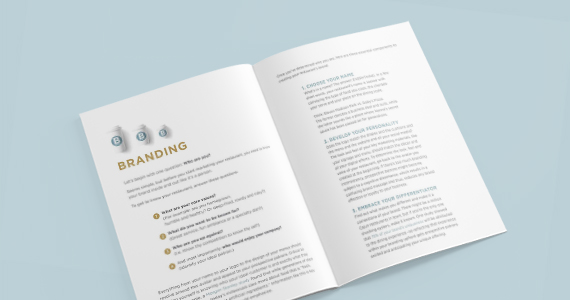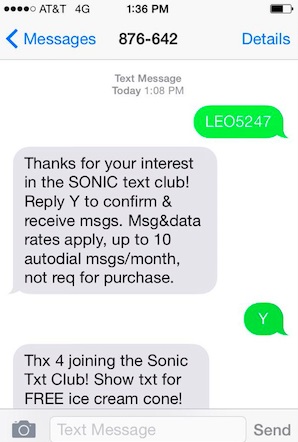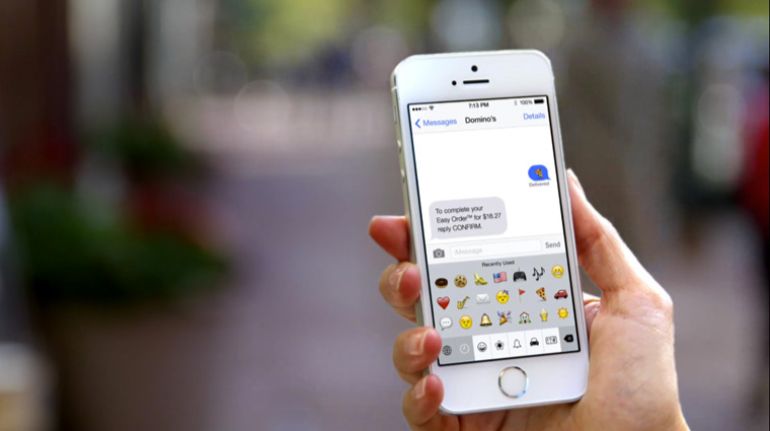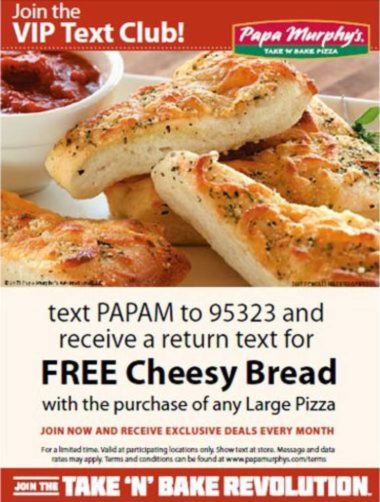Many restaurant managers and owners disregard text message marketing all together. Then, there are others who’ve read the compelling statistics, understand the impact, and make delivering this kind of promotional communication to their contacts and patrons top priority.
Here, you’ll learn five tips to kickstart your marketing efforts and help you answer that lingering question – what makes texting so effective for restaurant promotion?
Let’s get started. What’s the first thing you do when you want to eat out?
If you’re like 81% of consumers, you turn to your mobile device to search for a nearby dining establishment and check out their hours of operation, location, menu, and more. So, what if you could get your information into the palm of your patron’s hand before they have to type anything into the search bar? Well, that’s what successful restaurants are doing with SMS marketing.
You can use text messaging to benefit your restaurant through promotion and brand awareness, to keep a database of contacts and customers, to share your menu and new dishes, to attract sales with exclusive deals, and even boost internal communication processes. This restaurant marketing idea is a convenient, effective, and – best of all – instant way to stay in touch with staff and customers.

Everything you need to know about social media, digital marketing, SEO, and more!
1. Make Sure People Opt-In to Receive Texts From You
The foremost tip that every SMS marketing professional needs to know to avoid hefty penalties: SMS recipients must opt-in to receive this type of communication from you. Just because someone has made a purchase from you or has signed up for your email list does not mean you have permission to send a text message to their phone. So to air on the side of caution, keep your email and SMS signup methods separate.

Email newsletters are usually opted-in by way of a subscription form on a restaurant’s website. SMS marketing is a little different. A text message recipient will usually opt-in by texting an “SMS keyword” to a six-digit number, a “short code.” Long numbers, including mobile phone numbers can also be used for inbound messaging.
For Example: Applebee’s used a short code opt-in strategy to collect new subscribers, and had amazing results. Their guests could simply text a short code to opt-in and receive special offers right away. This strategy has generated hundreds of thousands of subscribers.
2. Learn to Write Concise, Effective Calls to Action
If your recipients aren’t told exactly what to do, chances are, they won’t do anything. So, if you’re hoping to write an effective SMS campaign, be sure to include calls to action that guide the reader to the next step that they can take.
Here are just some of the limitless calls to action (CTAs) you can use to get more traffic through your doors by way of text message marketing:
- “Come in today”
- “Visit this website”
- “Follow on Twitter”
- “Reply to this message”
- “Use this coupon code”
- “Show this message to your server”
- “Comment on this post”
- “Order online now”
Think you can do us one better? Go for it! Learn to write your own custom CTAs and include one in each SMS message you send.

Effective CTAs are brief and to the point. One of the most common SMS calls to action is “Reply X to X.” This and all other CTA variants help guide recipients to the next sequential step in order to make a purchase.
As is true of all of their promotions, Starbucks’ SMS campaigns are clever. Their text message marketing CTAs generate a ton of engagement with their various campaigns. Fun fact: they include funny GIFs in their messages to customers.
3. Know Which Feelings Lead to Sales
When it comes to sales in any industry, emotions are what ultimately trigger people to take action. People buy because of the belief that the product or service will make them feel something. Your product is food service. One feeling that your service naturally provides is fulfillment. But is “fulfillment” an emotion that drives sales? The truth is that it could, but there are six emotions that are proven to drive sales: greed, fear, envy, altruism, envy, pride, and shame.
To take the emotional aspect of sales to a new, relevant level, why not use emojis? Domino’s did, but not how you’d think. Instead of sending a pizza emoji to their customers, they asked their customers to send pizza emojis to them. By doing so, the subscriber would let Domino’s know they’re ready to order via SMS.

4. Use Relevant Power Words to Evoke Emotions
Your advertisements and the text messages you send should reflect the emotion you are trying to trigger. For example, the words “VIP,” “exclusive,” and “revolution,” used in Papa Murphy’s advertisement below, can be used to trigger feelings of greed, convincing readers they’re part of a secret, free cheesy bread club.

What other words can help you trigger specific emotions? The list is endless, but the bottom line is this: choose words that are relevant to your brand. Just like a vegan cafe wouldn’t use the same phrases to appeal to customers as a five star–restaurant, neither should you.
Where Domino’s uses emojis, most restaurants rely on powerful language to make their point. Among the restaurants that prove the power of word-choice on SMS campaigns is Chick-fil-a, who used witty misspellings – “Chikin” in place of chicken – to grab their readers attention. The results of the campaign? A 65.3% spike in new website visits via social shares, including text messaging.
By knowing the ins and outs of opt-ins, to mastering the art of CTA writing, and everything in between, these four tips will help take your restaurant’s first text messaging campaign from good to great.

Everything you need to know about social media, digital marketing, SEO, and more!
Free social media templates for your restaurant
Sign up for our free weekly TouchBistro Newsletter







